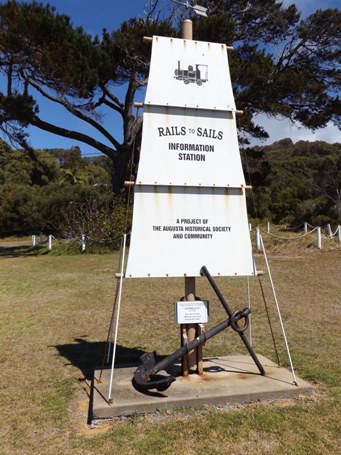Australia So Much to See


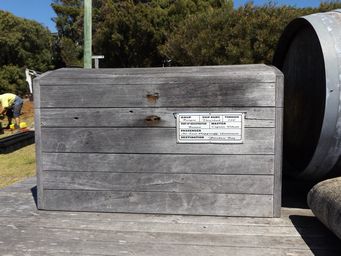
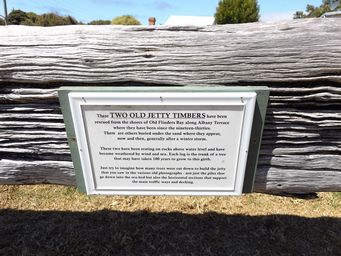
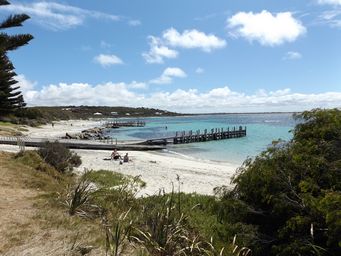
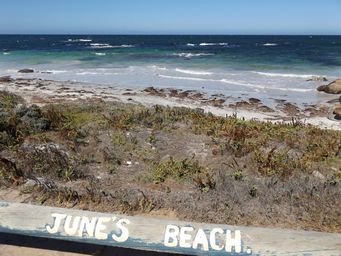
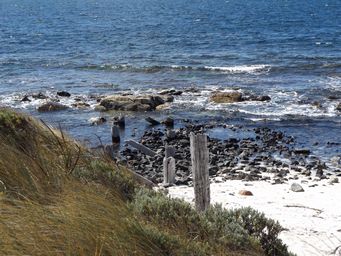
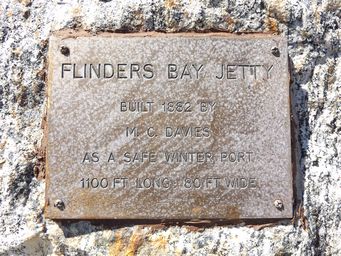
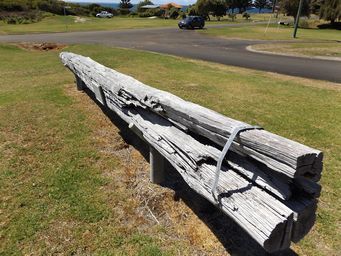

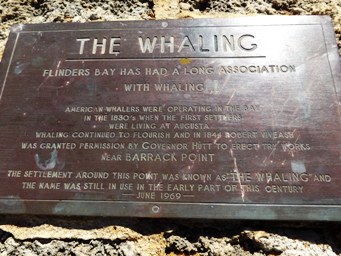
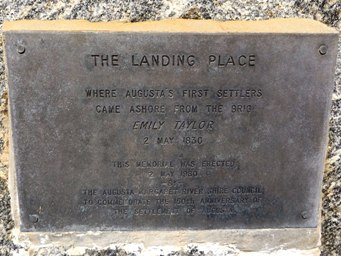
Near Barrack Point, a memorial commemorates the whaling history of the Flinders Bay coast. American whaling ships were calling into Flinders Bay in the early 1800s.
Barrack Point was originally a port of call for the whaling ships which frequented the area and was known as The Whaling.
In 1839 a whale industry was commenced at Flinders Bay, with Robert Viveash
establishing a whaling station at Barrack Point in 1844.
Rails and Sails is an outdoor museum display at Flinders Bay, featuring the history of timber milling and transport rail to sail. Old photos including photos of Flinders Bay and Hamelin Bay jetties, and of the early days of the timber industry are in display in a shelter. Items on display in the outdoor area include remnants of the former Flinders Bay Jetty and other shipping relics.
Above left is a sea chest, used to transport personal belongings to Augusta.
These two old jetty timbers (below) were rescued
from the shores of Old Flinders Bay along Albany Terrace where they have been since the nineteen thirties. There are others
buried under that sand which appear from time to time, generally after a winter storm.
These two were resting above water level
and have been weathered by wind and sea. Each log is the trunk of a tree that may have taken 100 years to grow to this
girth.
Flinders Bay settlement and its historic roots
Flinders Bay Jetty, Barrack Point, Augusta, Western Australia.
Barrack Point was originally a port of call for the whaling ships
which frequented the area and was known as The Whaling. In 1855 Flinders Bay was officially proclaimed a port.
Timber
was first exported from Augusta in 1876 and in 1882 M.C. Davies began construction of two large jetties at Barrack Point and Hamelin
Bay. This site, marked by a plaque on a cairn below left), was where MC Davies built his third jetty in 1882. It was extended
to 1,000 feet (approximately 300 metres) in length in 1900. The jetty broke up in 1932 and only the remnants of a few pylons (below
right) remain.
M.C. Davies had his eyes on the timber belt between Cape Hamelin and Augusta several years earlier. In 1879 he
obtained a fourteen year lease for seventy thousand acres of land in the district. Read more about M.C. Davies.
In 1882
he was granted a further lease of 46 thousand acres for 42 years. Within a year the Cooldarup (Kudardup) mill was operating a few
kilometres from Augusta. Considered quite modern in its time, the 25 horse power mill had an output of 9,000 super feet per day. The
jetties were a necessity as the timber mills at Cooldarup and Karridale were producing large quantities of cut Karri timbers
and there was a great demand for hardwoods worldwide. These timbers would be used to construct railways in India, mines in South Africa,
wharves in Hong Kong and streets in London.
Above compiled with references from West Australian Vista, State Heritage WA, and the Augusta Margaret River Shire websites and signage
at the sites.
